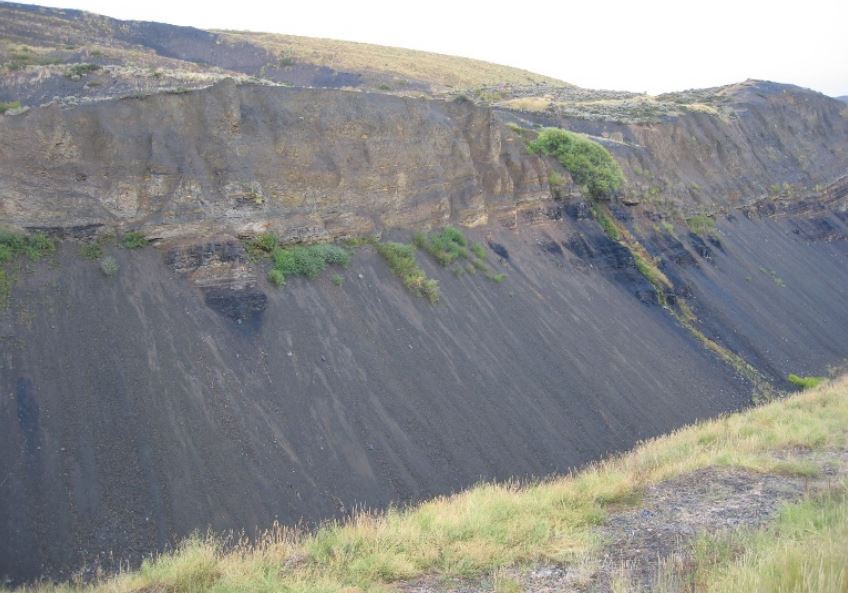EPA outlines Ballard Mine cleanup plan

The Environmental Protection Agency has outlined a number of components in its final, $41 million cleanup plan for the Ballard Mine site, 13 miles north of Soda Springs. The work is expected to take six to eight years for construction alone.
The former open-pit phosphate mine was operated by Monsanto from 1951 to 1969. The processing plant left about 19 million cubic yards of waste rock that contains elements that may be harmful to people and animals.
The 534 acres consists of six open pits, six external waste rock dumps, an abandoned haul road, and the Ballard Shop. About four million tons of phosphate ore remain at the site. Monsanto, now Bayer, intends to recover some of it as part of the cleanup effort.
According to EPA, the shale waste rock contains elevated levels of contaminants like selenium, arsenic, naturally occurring uranium, and related products including radium-226 and radon-222.
“The cleanup of the old Ballard Mine has been a long time in coming,” said EPA Regional Administrator Chris Hladick. “This Administration has placed a high priority on expediting Superfund cleanups to more quickly return contaminated sites to productive use. We’re pleased to say the pending cleanup of the Ballard Mine will do just that.”
The selected remedy in the Record of Decision (ROD) is a combination of engineered source controls, treatment technologies, and other approaches and components.
The ROD for “Operable Unit 1” includes the following key components:
• Engineered Cover System. Mine pits will be filled to cover exposed ore beds and shale. A cover system five to six feet thick will be constructed over the 500+ acres where wastes remain.
• Permeable Reactive Barriers (PRBs). A series of PRBs will be constructed downgradient of the source areas to intercept and treat contaminated groundwater.
• Wetland Treatment Cells. Semi-passive bioreactors will be constructed on the margins of the site to remove selenium and other contaminants from seeps and springs.
• Monitored Natural Attenuation (MNA) of contaminants in Groundwater. The remedy also recognizes that dilution and dispersion of groundwater contaminants will occur over time. EPA will monitor to determine if it’s occurring at the expected rate.
• Stormwater and Sediment Control BMPs. During construction, sediment ponds and other control BMPs will be constructed to control release of sediment to downstream waterbodies.
• Monitored Natural Recovery of Sediment (MNR). As with MNA for the groundwater, natural processes of dilution and dispersion are expected to result in natural recovery of these impacted areas and attainment of cleanup goals.
• Institutional Controls and Access Restrictions. Institutional Controls will protect the remedy and prevent human exposure by limiting land and resource use. Fences, gates and, physical barriers will be built to prevent damage to engineered and vegetated remedy components.
After it is constructed, the cleanup project will be evaluated for effectiveness every five years.
KIFI 2019
